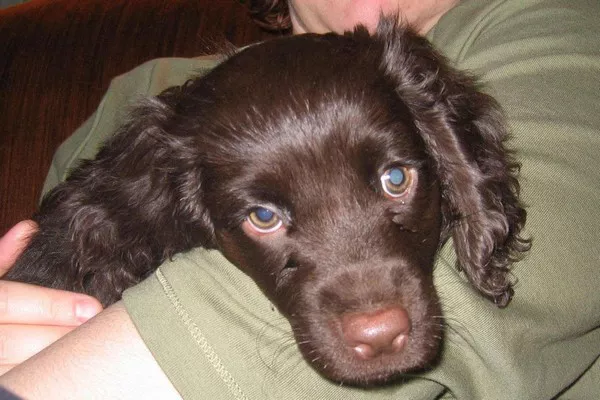Corn snakes, Pantherophis guttatus, are popular pets known for their striking coloration, docile nature, and relatively easy care requirements. However, like all reptiles, they have specific needs when it comes to diet, habitat, and health. One of the most common questions pet owners have about corn snakes is how long they can go without food. While it’s not uncommon for a snake to occasionally refuse food, especially during periods of stress, shedding, or hibernation, understanding the reasons behind this and the limits of a corn snake‘s ability to go without eating is crucial for their health and well-being.
In this article, we will explore the factors that affect a corn snake’s feeding behavior, how long they can safely go without eating, and what steps owners can take to ensure their snake remains healthy and happy.
Basic Feeding Requirements of Corn Snakes
Before we dive into how long a corn snake can go without eating, let’s first establish some basic knowledge about their diet and feeding habits. Corn snakes are non-venomous constrictors, primarily feeding on small mammals, birds, and occasionally amphibians in the wild. In captivity, their diet mainly consists of appropriately sized rodents such as mice or rats. Juvenile corn snakes typically eat once every 5–7 days, while adults may only need to eat every 7–14 days, depending on their size and activity level.
A healthy corn snake will eat regularly as long as it is in a stable environment and provided with food at the appropriate intervals. However, several factors can cause a corn snake to refuse food or go without eating for a period of time.
Factors That Affect a Corn Snake’s Eating Behavior
1. Temperature and Environmental Conditions
As cold-blooded reptiles, corn snakes rely on external temperatures to regulate their body heat. This means that if the temperature in their enclosure is too low, their metabolism will slow down, and they may refuse food. Corn snakes are most active and have a healthy appetite when the temperature is in the range of 75°F to 85°F (24°C to 29°C) during the day, with a slight drop in temperature at night. If the temperature drops too much, they may go into a semi-dormant state, where they may not eat for an extended period.
Conversely, if the enclosure is too hot, it can lead to stress and dehydration, which may also cause a corn snake to stop eating. Always ensure that the temperature in your snake’s enclosure is properly regulated using a thermostat and heat sources such as heat mats or heat bulbs.
2. Shedding
Shedding, or ecdysis, is a natural process for snakes. During this time, a snake’s skin becomes dull, and they often experience a temporary loss of appetite. This is a common occurrence, and corn snakes typically shed every 4–6 weeks. During the shedding process, corn snakes may refuse food, and it can take several days to a week for the snake to complete the shedding cycle.
If your corn snake is about to shed, it’s important to provide a humid environment, as moisture helps facilitate the shedding process. This can be done by lightly misting the enclosure or placing a humidity box in the cage. Once your corn snake has successfully shed, they usually resume their normal eating habits.
3. Stress and Environmental Changes
Stress is a significant factor that can cause a corn snake to stop eating. Stress can be caused by various factors, such as:
Moving to a new environment: A corn snake may refuse food if it has just been introduced to a new tank or location. The unfamiliar surroundings and handling can cause anxiety, leading to a loss of appetite.
Excessive handling: While corn snakes are generally docile, excessive or rough handling can be stressful for them. If they feel threatened, they may refuse food.
Noisy or disruptive environments: Snakes prefer calm and quiet environments. Loud noises, the presence of other pets, or constant changes in their enclosure can increase stress and cause them to stop eating.
To reduce stress, it’s important to maintain a consistent and quiet environment for your corn snake. Limit handling during the first few days after introducing the snake to a new home, and avoid making rapid changes to its enclosure.
4. Health Issues
If a corn snake goes without eating for an extended period, it could indicate an underlying health issue. Some of the common health problems that may cause a loss of appetite in corn snakes include:
Parasites: Internal parasites, such as nematodes or tapeworms, can cause a decrease in appetite and general lethargy in corn snakes. A veterinarian can perform tests to determine if parasites are present and recommend a treatment plan.
Respiratory infections: Respiratory issues are common in reptiles, and symptoms such as wheezing, nasal discharge, or labored breathing can make it difficult for your corn snake to eat. If you suspect your snake is sick, it’s important to seek veterinary care as soon as possible.
Mouth rot (stomatitis): Mouth rot is a bacterial infection that affects the mouth and throat area. It can cause swelling, sores, or pus around the mouth, making it painful for the snake to eat. A vet will typically treat mouth rot with antibiotics and supportive care.
If your corn snake stops eating and shows any signs of illness, it’s crucial to consult with a reptile veterinarian to determine the cause and get appropriate treatment.
5. Hibernation or Brumation
While corn snakes do not hibernate in the traditional sense, they do undergo a period of reduced activity known as brumation. This typically happens in the winter months when temperatures drop and light levels decrease. During brumation, corn snakes may stop eating for a period of weeks or even months.
Brumation is a natural behavior, and it’s essential to respect it. Do not force-feed your snake during this time. Instead, provide a quiet, cool environment for them to rest. If your corn snake shows no interest in food for an extended period during the colder months, brumation may be the reason.
6. Overfeeding or Improper Feeding Schedule
It’s also important to note that overfeeding your corn snake or feeding them too frequently can cause them to lose interest in food. Corn snakes have a relatively slow metabolism, and they may only need food every 7–14 days once they are adults. Feeding them too often may lead to obesity, which can also cause them to stop eating or become less active.
Make sure you’re offering food at the correct intervals and providing an appropriately sized prey item. A general rule is that the prey should be no larger than the widest part of the snake’s body. Too large of a meal can make the snake uncomfortable, leading to a refusal to eat.
How Long Can a Corn Snake Go Without Eating?
Now that we’ve explored the various factors affecting a corn snake’s eating behavior, let’s address the central question: how long can a corn snake go without eating?
While the answer depends on several factors, such as the snake’s age, health, and environmental conditions, corn snakes can generally go without food for several weeks without significant harm. Adult corn snakes may be able to survive for up to 4–6 weeks without food, especially if they are in good health and have access to water. However, it’s important to note that prolonged periods without food can lead to malnutrition and dehydration, which can severely impact the snake’s health.
For juvenile corn snakes, going without food for extended periods is more dangerous. They have smaller fat reserves and require more frequent meals to support their rapid growth and development. Juvenile corn snakes should not be left without food for more than a week or two at a time.
If your corn snake refuses food for longer than expected, or if you notice any signs of ill health, it’s important to assess the potential causes. Stress, environmental issues, or health problems could be at the root of the problem, and prompt action should be taken.
What to Do if Your Corn Snake Refuses Food
If your corn snake is refusing food, here are some steps you can take to help encourage eating:
1. Check the Temperature
Ensure that the temperature in your corn snake’s enclosure is within the recommended range (75°F to 85°F). If the temperature is too low, use a heat source to bring it up to the proper level. You should also have a cool side of the tank with a temperature around 70°F to give your snake a choice of temperature gradients.
2. Assess the Humidity Levels
Proper humidity is important for shedding and general well-being. Aim for a humidity level of 40–60% in your snake’s enclosure. If the humidity is too low, use a humidity box or mist the enclosure lightly to create a more comfortable environment.
3. Offer Appropriate Prey
Make sure you’re offering appropriately sized food. If you’re offering frozen prey, ensure it is fully thawed and warmed to room temperature. Some corn snakes are picky eaters and may prefer live food, but it’s important to always supervise if you decide to offer live prey to prevent injury to your snake.
4. Reduce Stress
Minimize handling, avoid loud noises, and ensure your snake’s enclosure is in a quiet, secure location. If you’ve recently moved your snake to a new tank, give it time to adjust before offering food.
5. Consult a Veterinarian
If your corn snake continues to refuse food for an extended period, and you notice other signs of illness such as lethargy, respiratory issues, or abnormal behavior, it’s time to consult a reptile veterinarian. They can conduct a thorough examination, perform tests, and determine if there is an underlying health problem causing the loss of appetite.
Conclusion
Corn snakes are hardy and adaptable pets, but like all animals, they can experience fluctuations in their eating habits. While they can survive without food for several weeks under certain circumstances, it’s essential to monitor their behavior and overall health. Factors such as temperature, stress, shedding, and health issues can all contribute to a loss of appetite in corn snakes.
As a responsible pet owner, it’s important to understand the reasons behind your snake’s refusal to eat and take appropriate steps to address the issue. Providing a stable and comfortable environment, ensuring the correct temperature and humidity levels, and offering appropriate prey will go a long way in keeping your corn snake healthy and happy. If in doubt, always seek the advice of a qualified reptile veterinarian. By doing so, you can ensure that your corn snake leads a long, healthy life in your care.
Related Topics:





















